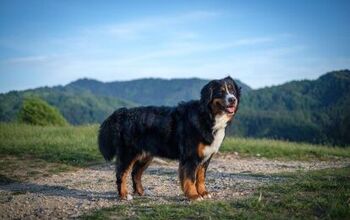Nine Toasty Tips To Keep Your Senior Dog Warm Outdoors This Winter

The star and the inspiration for this post is Kevin Roberts’ dog, Willow, who has since crossed over the Rainbow Bridge. He brought her home when she was 3 years old, and she lived with him until she was 15. Kevin feels lucky that Willow was able to hike with him right up the day she died. It takes a little bit of consideration and planning to include your senior dogs in your outdoor adventures, but Kevin has a few tips to ensure you and your senior dog enjoy this winter in comfort.
There is something special about a senior dog. Over the years, you have built a lifetime of memories together. Now your best friend may be more “gray” than “play” at this stage in his life, but that doesn’t mean he should stay at home once it starts snowing. He loved the snow as a pup and now as a senior, he still loves it and can benefit tremendously from regular exercise, even in the snow. That being said, the cold temperatures in winter can negatively affect a senior dog, so it’s important to take a few things into consideration before heading out into the winter wonderland. Here are nine essential outdoor tips to keep your senior dog healthy and safe outside in the winter.
Related: Safety Tips For Dog Paws
- Keep him moving. Walks and adventures will help keep joints nimble and the brain engaged. During the winter, your senior dog will benefit from multiple short excursions rather than two or three long walks, especially if the temperature is below freezing outside. It’s probably not a good idea to take him on those long hikes you used to love doing together. Even if he is moving the whole time, snow can clump in his paws (if he refuses to wear booties), which can be painful and cause him to limp, and he can get cold before you’re ready to turn back and head home.
Avoid over doing it. “The mind is willing, but the body is not able” may be the motto of many senior dogs. Your dog might not want to romp through the snow like he did when he was a pup, since age has slowed him down and he pays for it with aches and pains the next day. So, even though you may want him to keep up his 60-minute walks even in the winter, you may want to rethink that. Yes, it’s up to you to be the judge of your dog, so look at life and the activities you do together from his senior perspective, rather than yours.
Set out a warm place to lie down. Place a few dog beds around your home so your senior dog can find a place that’s just the right temperature to lie down. A fleece blanket on top of a dog bed makes it a little warmer and a little softer – two things your senior pooch is sure to appreciate! And now that your dog is older and past the chewing stage, you can treat him to an electric blanket for his favorite napping spot.

Kevin Roberts lives for adventure. Together with his pack of rescue dogs and his husband, he spends as much time outdoors as possible. Kevin lives by the motto: "Get outside and play with your dogs!
More by Kevin Roberts

























